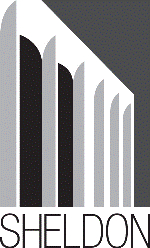Fine and Performing Arts, Hixson-Lied College of

Sheldon Museum of Art: Catalogs and Publications
Date of this Version
1985
Citation
Resource Reservoir, Sheldon Memorial Art Gallery, Volume 1 Number 1,
Abstract
Synthetic Cubism not only synthesized "real" materials with painted/constructed reality, but also synthesized earlier discoveries, permitting objects to seem tangible while forms and surfaces were shuffled in space as thin as gossamer.
World War I ended the joint investigations of Picasso and Braque and dispersed the international community of artists who had gathered in Paris. Excepting Juan Gris and Ferdinand Leger, all of these artists, including the American artists, were on-lookers. Few grasped all of the issues and formal ideas with which Braque and Picasso experimented. Most seized upon an aspect of the style and wedded it to theories of their own, sometimes political, sometimes purely aesthetic.
Those theories produced Futurism in Italy, Vorticism in Britain, Constructivism and Suprematism in the Soviet Union, De Stijl in Holland. Orphism and Purism were generated by French painters while two Americans in Paris, Morgan Russell and Stanton MacDonald-Wright developed their concept of Synchronism. The work of some of these moved toward pure abstraction, the work of others returned to a more traditional, often figurative art.
Fundamental to nearly all, however, was the use of the facets of Analytic Cubism. Fractured planes served to generate complex, geometric images which frequently were held to be a metaphor for the mechanized and shattered quality of modern industrialized experience. To many parts of this complicated avantgarde profusion of styles the American artist could and did respond. Generally, however, progressive American painters did not, collectively, generate a national style as can be discovered in Russia or Holland. Rather, Cubism in America tends to reflect the diversity of styles produced internationally.


Comments
All images are copyright by the original artists. Publication copyright 1985 The Regents of the University of Nebraska.